Each fall my Gary C.of Pennsylvania visits us in Massachusetts for a week of striper fishing. Sometimes the fishing is great. Sometimes it’s just OK. But either way Gary is a good and longtime friend and fishing companion and we always have a good time.
While I rarely keep track of my own catches these days, during the week Gary visits I do keep track of his, and it’s a pretty good indicator of how the fall fishing has been year to year. The reality of fall striper fishing, despite it’s reputation as a time of bountiful blitzes, is that it is very streaky. This is especially true of the daytime fishing. In the daytime you tend to find either a lot of fish or none at all, boom or bust. This is a direct result of the stripers’ fall feeding patterns in which they abandon the structure and regular feeding lanes of summer to chase schools of fast moving bait. Today they may be here, tomorrow there, and the next day nowhere at all.
Even when you find the fish, they can be maddeningly difficult to catch. If you are a shore or wade angler, it’s typical to arrive at the water’s edge to find a cacophony of bait, birds, and bass all boiling the surface–but just outside of your casting range. If you a a boat fisherman you may find yourself surrounded by breaking fish, but by the time you hook and land one the school has moved 300 yards away. Fire up the engine, motor over, and the the school moves once more. You are constantly playing catch up, and for as many fish as you may see you never catch quite as many as you expect.
Night fishing in the fall, as it is most other times of the year, is more reliable. The bass can be counted on to gather at certain spots that attract bait at certain stages of the tide. Rivers and estuaries are especially good places for this. But even night fishing tends to be less predictable in autumn than other times of the year. And, like day fishing, it is subject to that other great factor of fall that can shut down the fishing in a hurry: weather, in the form of wind and storms (cold, though uncomfortable, doesn’t affect the fishing that much as the water temps are slow to change).
Here’s a brief summary of Gary’s catches since 2007:
2007: Day 14; Night 142; Total 156
2008: Day 2; Night 34; Total: 36
2009: Day 3; Night 52; total 55
2010: No visit
2011: Day 15; Night 4; Total 19
2012: Day 3; Night 36; Total 39
While a lot of factors, including weather, the relative lateness week of the visit, and the diminishing striper population in recent years all affect the numbers, it’s pretty clear how much more effective the night fishing is over day. 2011 is the only outlier in that respect, a reflection of my purchase of a boat (which allowed us to chase daytime schools) and night fishing that was exceptionally slow that year (largely due to the absence of lights on the water where they had once existed).
This year’s visit began this evening and we got off to a pretty good start, with Gary landing 15 bass up to 26 inches and dropping a few as well.
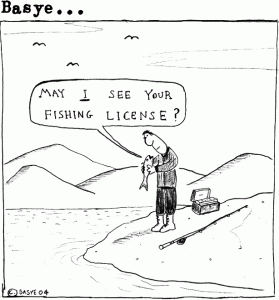 If you haven’t already heard, starting this year Massachusetts (along with every other US state bordering the ocean) will now require a fishing license for most salt water sport fishing situations. A summary of the pertinent details:
If you haven’t already heard, starting this year Massachusetts (along with every other US state bordering the ocean) will now require a fishing license for most salt water sport fishing situations. A summary of the pertinent details: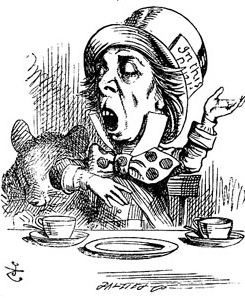 The striper fishing along the shores of the inner harbor in Winthrop has slowed down a bit over the past few days, probably because of the offshore storms, which have really roiled up the water in some places and have made the outside shore relatively unfishable unless you can cast a flyrod
The striper fishing along the shores of the inner harbor in Winthrop has slowed down a bit over the past few days, probably because of the offshore storms, which have really roiled up the water in some places and have made the outside shore relatively unfishable unless you can cast a flyrod
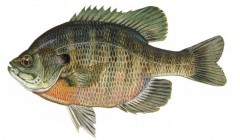
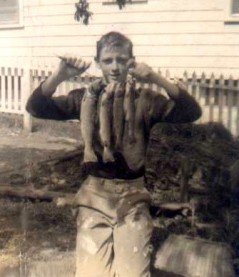 While biding my time and counting down the days until the stripers return–within the week now, I reckon–I decided to flip through the pages of some of my past fishing logs tonight, to see if the past held anything in store for me, so to speak.
While biding my time and counting down the days until the stripers return–within the week now, I reckon–I decided to flip through the pages of some of my past fishing logs tonight, to see if the past held anything in store for me, so to speak.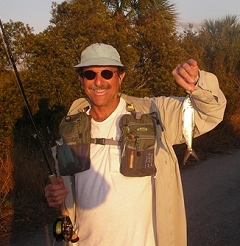 Most fishing web sites are full of pictures of people holding up large fish that they caught. After awhile the fish in these pictures all look the same.
Most fishing web sites are full of pictures of people holding up large fish that they caught. After awhile the fish in these pictures all look the same. Our friend and neighbor
Our friend and neighbor 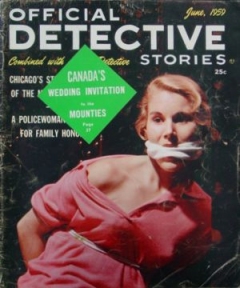 In the current Pointless Poll (see the
In the current Pointless Poll (see the